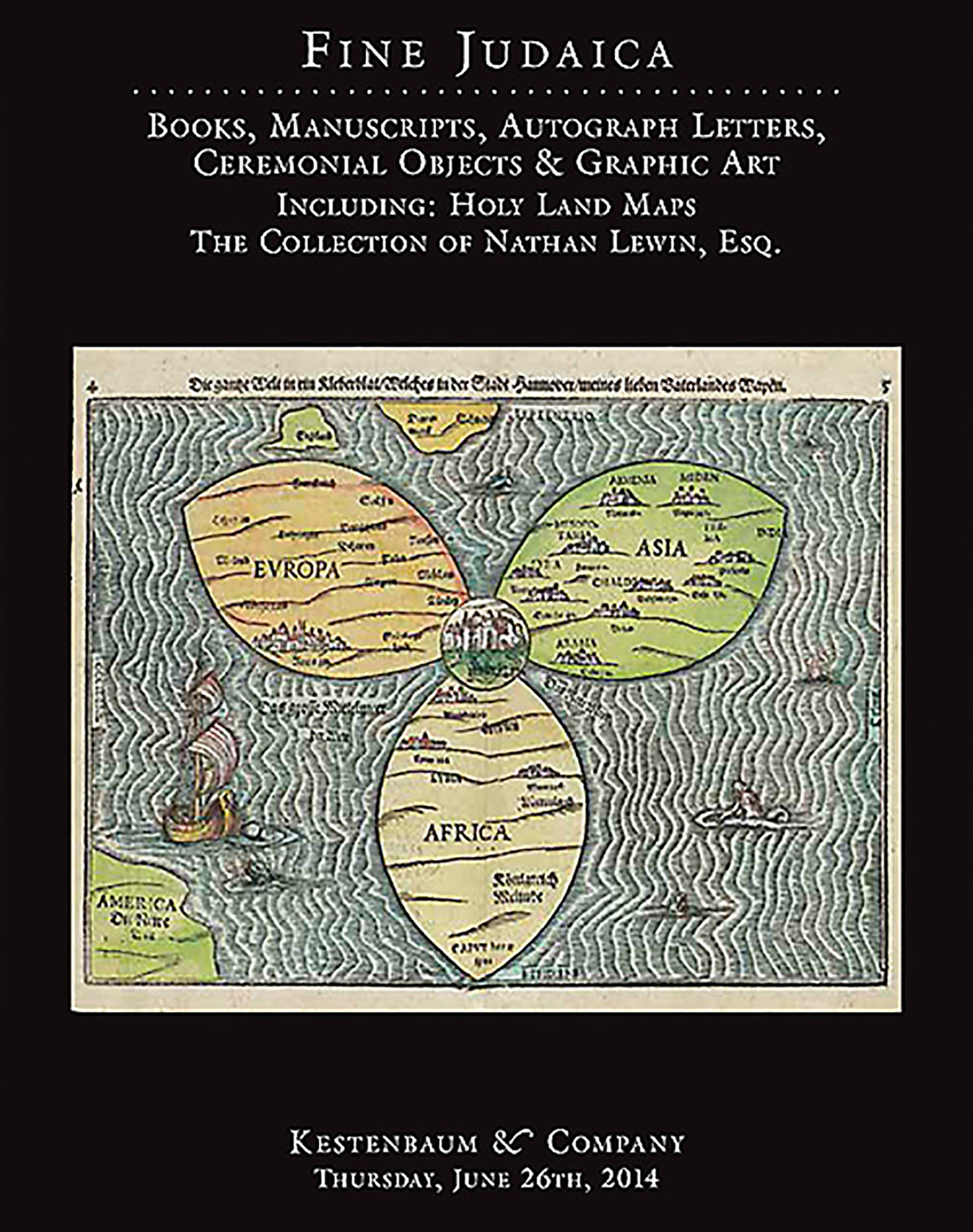AN EXTRAORDINARILY RARE AND HIGHLY IMPORTANT PARCEL-GILT SILVER FILIGREE SPICE CONTAINER. Galicia, 1721.

AUCTION 62 |
Thursday, June 26th,
2014 at 1:00
Fine Judaica: Books, Manuscripts, Autograph Letters, Graphic and Ceremonial Art
Lot 5
AN EXTRAORDINARILY RARE AND HIGHLY IMPORTANT PARCEL-GILT SILVER FILIGREE SPICE CONTAINER. Galicia, 1721.
Est: $150,000 - $200,000
PRICE REALIZED $280,000
A very fine silver filigree spice container in the tower form. A molded stem widens to a small six-sided knop on a hexagonal base mounted upon six ball-and-claw feet. The four-tiered tower is set on a balustrade base. The container features a hinged door with lock and working key, on the opposite side of the door is set an engraved clock face. This section is surrounded by six gilt cast male figures bearing shields engraved in Hebrew. The belfry section of the tower houses a single bell and is circled at the base by six gilt pennants. The two upper sections represent lanterns, which are surmounted by a domed cupola and a flagpole with a gilt engraved lion.
Unmarked. Height: 15 inches (38.4 cm). All hardware original, only the clock hands are lacking.
<<A SPICE-TOWER OF EXQUISITE QUALITY, IN EXCEPTIONALLY FINE CONDITION.>>
This magnificent silver spice tower contains several motifs found in individual European Jewish spice containers produced from the 16th-century and on. The use of cast human figures, clock faces, zoomorphic flags, hinged doors and belfries are all known features in the production of spice towers of this period, some such elements less common than others. What is remarkable in the present spice tower, is the inclusion of all these elements, delicately balanced, in one extraordinary piece.
Standing four tiers tall and in a state of excellent preservation, the imposing size of this spice tower is balanced by the intricate and complex filigree design, the product of masterful workmanship. Throughout, remarkable details from the lion-shaped flag at top, to the gilt masks set above the carefully wrought ball-and-claw pedestal, reflect a rich architectural tradition and emphasis upon the finest metalwork.
Of particular distinction located along the central gallery, are six male figures dressed in armor. The addition of this rare soldier motif is most appropriate for the representation of a fortified tower. Each figure clutches a shield inscribed with individual Hebrew texts relating either to the actual design of the spice tower itself (i.e. guarding the door) or to the prayers recited during the Havdalah ceremony itself. On the right side of the hinged door and to the left of the clock face, two of the armored figures hold shields engraved with the verse from Psalms 118:19: “Open to me the Gates of Righteousness and I will Enter unto Them.” Dots are placed over just three of the letters (Taph, Peh, Aleph) on these two shields - likely establishing the year of production of this spice tower: 1721. The other four soldiers’ shields bear Hebrew acronyms of the blessings recited during the Havdalah, in relation to which each soldier possesses the relevant accouterment: A braided candle, a Kiddush cup, a spice box, while the fourth figure gazes at his finger nails as is customary in relation to the blessing for fire.
A most unique addition of grandeur to the spice tower, not seen in any other example, are bosses of cast gilt-silver heads in turban-like caps at the base, a possible allusion to the exotic and distant lands from where spices originate. Thus the spice tower can be seen as a narrative of history: The turbaned heads allude to the East, the source of the spice trade, a continent that fed Europe both economically and culturally. With an increase in monetary wealth, there is often an analogous surge in the patronage of the arts. Thus, the elaborate design and lavish detail of this spice tower is indicative of a patron having the financial resources and cultural inclination to allocate funds toward the commissioning of a Jewish ceremonial object of the very highest quality.
The Jewish Museum of Frankfurt (JMF 87-104) possesses a similar such spice-tower, not as elaborate as the one offered here and of course lacking the gilt bosses along the base. (Illustrated in: Jüdische Türme aus Schwabische Gmünd (2001) p. 70). Also similar, but several inches shorter and lacking the engraved shields with Hebrew blessings, is a spice-tower from the Arthur Howitt Collection sold at auction in May 1932 and re-offered by Christie’s Amsterdam, December 10th, 2007, Lot 196.
See also M. Keen, Jewish Ritual Art in the Victoria & Albert Museum (London, 1991) p. 72; Benoschofsky & Scheiber, The Jewish Museum of Budapest (1987) no. 80; and I. Shahar, The Jewish Year, (Leiden, 1975) pl. ix-d.
<<THIS EXTRAORDINARY SPICE-TOWER REPRESENTS THE VERY HEIGHT OF THE ARTISTRY OF CEREMONIAL JUDAICA. IT MOST CERTAINLY RANKS AMONG THE VERY FINEST SPICE TOWERS - IF NOT THE FINEST - TO HAVE BEEN OFFERED FOR AUCTION SALE IN A GREAT MANY DECADES.>>
